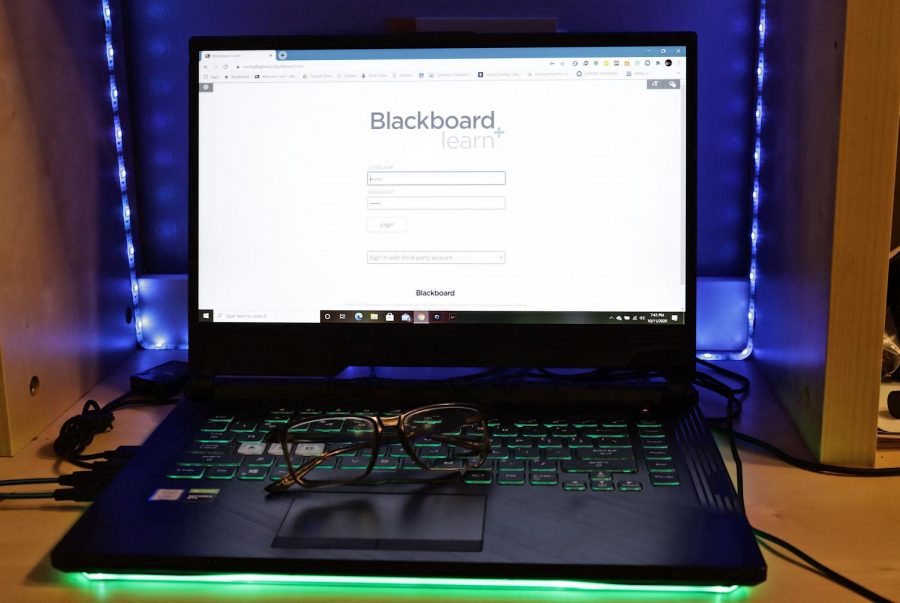The Health Impacts of Online Learning
Many students’ school days now consist of hours upon hours sitting in front of computer screens. While for many it is currently the best and safest option, it can still take a toll on health.
Staring at a computer screen for a majority of the school day can have detrimental effects on youth.
October 16, 2020
Screen technology has long had a troubled relationship with the community of health professionals. Concerns ranging from eye strain and obesity to mood swings and depression have been widely noted in association with excessive screen time. With the recent and widespread shift to online schooling, where students may spend up to seven hours a day in front of a computer screen for class before likely turning to their phones and TVs in their free time, the health concerns are significantly magnified.
Full-time cyber students can log up to 35 hours of screen time a week strictly for school. Yet studies show that sitting in one spot and staring at a screen can take a toll on both our physical and mental health.
Screen time studies have shown the negative effects of long durations in front of a screen for a substantial amount of time. It has even been connected to obesity and depression, as students sit in a stationary spot , usually inside, for such a long period of time. Increased screen time is also linked to headaches and anxiety. Even large technology brands, such as Apple and Google, have created settings to track and limit screen time due to complaints of screen time related issues.
One of the most prominent concerns of online learning is eye strain. The more hours spent online, the more likely it is that intense eye strain will occur. This is partly due to blue light, which causes eye strain and increases the risk of macular degeneration. Taking breaks from screen time, where the eyes are focused on things like the outdoors, is often suggested in order to relieve the strain.
However, this is not an option for every student. After one 40 minute class, there is often another mandatory class following right after, leaving no time to give the eyes a break. Some children are even more disadvantaged, as eye check ups may not be an option for them due to financial issues, and parents often don’t recognize the signs of eye strain. As a solution, some experts are recommending wearing blue light glasses. These glasses are designed block the harmful blue lights on screens and are said to relieve the eyes of strain due to screens.
Prior to the virus and remote learning, a study found that young people between the ages of 11 and 24 spent five hours on computers, three hours on phones, and two hours watching television. That already high amount of screen time didn’t include online learning, so one could only imagine how high the hours would be currently.
Younger kids, such as kindergarteners, face even more issues with online learning. For five year olds, it is recommended to only have one hour of screen time. For those who have full online learning, the screen time is much higher than that.
The continuous sitting that online learning often requires could also have an impact on the youth. Instead of walking from class to class, students now often end up sitting in one spot for every class. Essentially, the only movement occurring is minimal, such as going from the desk to the kitchen. For younger kids who normally would have recess, missing out on outside time during the school day can have negative health effects. Additionally, the loss of social interaction can be a cause of depression, as students are solitary in their learning.
Yet, as Texas Tech Medical School pediatrician Leslie Cortez noted, although the side effects of excessive screen time are serious, remote learning during a pandemic may be our safest option.
“There are a lot of downsides to this type of learning,” Cortez told the El Paso CBS News affiliate, “but at the same time, you have to think of what’s the alternative.”
For now, most students would agree with Cortez, but as the weeks and months of the pandemic wear on, the tradeoffs are likely to grow even more concerning.













